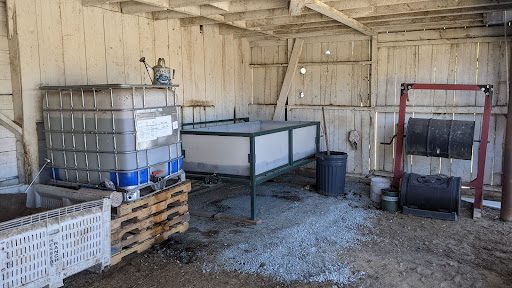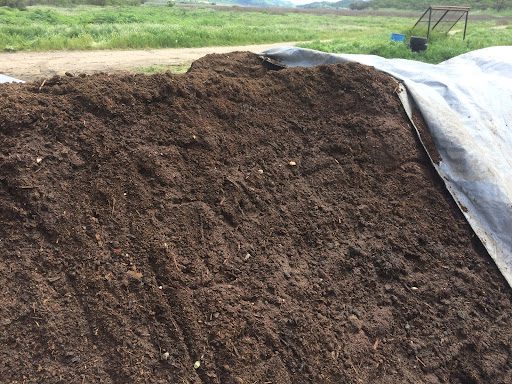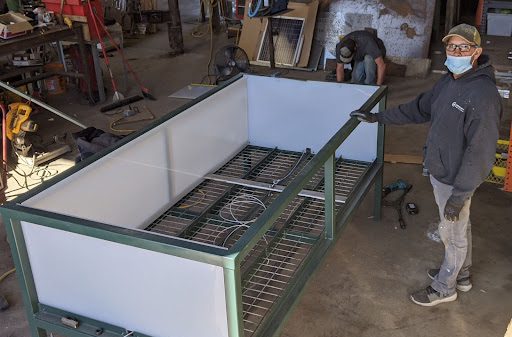Paicines Ranch in Central Valley, California, is a historic ranch raising grass-fed beef with an emphasis on agroecological, holistic management and research. Part of their work has included the development of a number of composting systems, including a vermiculture composter, a system similar to a fermented bokashi composter, and an aerated compost bioreactor.
The continuous flow-through worm bin is used to compost food scraps from on-site events and living. This design allows for continuous feeding of the compost, and a cutting bar is used to remove finished worm castings from the bottom. State regulations in California only allow us to compost agricultural byproducts, but worms qualify as livestock, so this is how Paicines is dealing with food scraps. Ultimately, this product will likely be added to foliar sprays, and into the seed-coat-slurry that we apply before planting.

Paicines employs the SPICE method, championed by Gerry Gillespie from Australia, to compost materials in all of their systems. For the bokashi method, piles are watered, turned, and allowed to heat up to kill weed seeds and pathogens. As the piles cool they are inoculated with a homemade lactobacillus culture and covered with tarps. This induces anaerobic conditions, which the lactobacillus favor. The pH drops and the compost begins to go through an anaerobic digestion (i.e. fermentation), similar to pickling. There are a number of benefits associated with this system: water retention within the piles, reduced carbon and nitrogen gas emissions, and reduced labor as the piles do not need to be turned. In the end, they end up with facultative anaerobes that can suppress soil pathogens. This compost is Paicines’ bulk product that we can broadcast as a soil amendment with a manure spreader. The Johnson-Su bioreactor is a relatively small-scale composting option that was developed to decrease undesirable smells and pests, reduce labor, and produce a very microbially-diverse, fungal-dominant compost. At Paicines, they have been refining their process over three batches since 2018, testing out a traditional cylindrical version (too small!), and ultimately developing a bioreactor in an open-top shipping container. The Paicines compost “recipe” for the bioreactor places an emphasis on high-carbon materials, stacking the feed with wood chips, straw, and dried leaf mulch. These materials act as bulking agents to prevent premature breakdown and to maintain pore spaces which allow for water and gas flow. Manure and grass clippings are also added, to provide nitrogen and other nutrients. Ultimately the breakdown has looked like: 15% wood chips, 40% chicken litter/bedding (mixed droppings and wood shavings), 20% horse bedding (mixed manure and straw), 10% lamb bedding (mixed manure + straw), 10% lawn clippings, 5% grape pomace. |

The final product from a bioreactor is a much denser, clay-like substance than traditional compost. At Paicines, they are using the output to coat seeds to improve germination rates, soil water infiltration, soil carbon content, and overall plant health. Going forward, they intend to make some of the compost product into tea or extract to be disseminated by the irrigation lines. When injecting compost into the irrigation lines, it is extremely important to screen the material first, in order to prevent larger chunks from clogging the lines and emitters. Wolfe’s Neck Center, in Freeport Maine, has been in touch with Paicines about their experiences with the Johnson-Su bioreactor as they begin plans for a small-scale compost system to be used in the education programs. |


